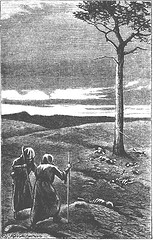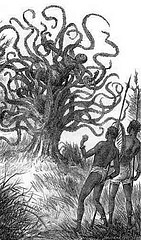
In the 18th century, tales circulated of a terrible tree in Java, so poisonous that it destroyed all life within 15 miles. It grew alone in a desolate valley, surrounded by dead bodies; there were no fish in the streams nearby, and birds fell from the sky. The upas tree’s poison could be harvested only by condemned criminals wearing leather hoods fitted with glass eyeholes, and scarcely a tenth of these returned.
Lord Byron and Charlotte Brontë popularized this account, and so did Charles Darwin’s grandfather Erasmus, but the truth is more prosaic. There is a upas tree, but its poison is generally only dangerous if you receive it via an arrow. It lives in Southeast Asia.
The exaggeration can be traced to one man, a French surgeon named Foersch who published a florid account in the London Magazine of December 1783. He was either sly or gullible — it’s not clear which.

